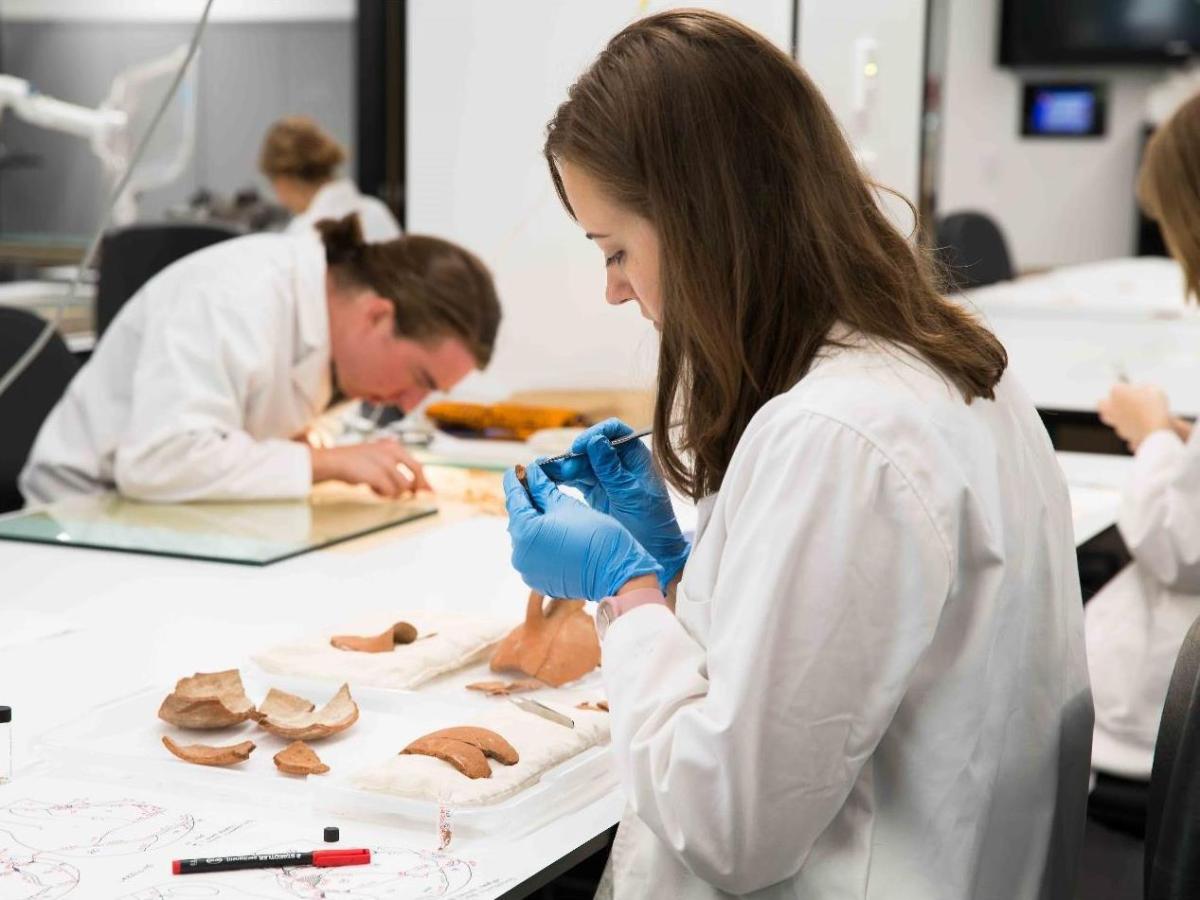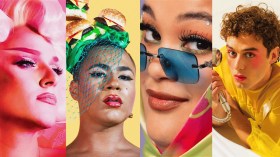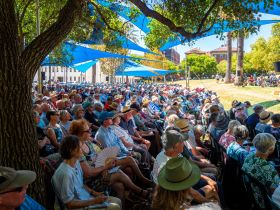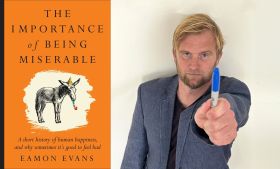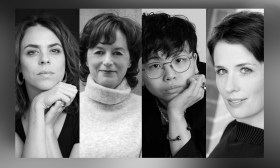Master of Cultural Materials Conservation students Lexi Townsend and Margot Murray working on conservation treatment projects in The Grimwade Centre labs. Photo by Emily Bartlett.
‘We wanted people to be able to see in because conservation is traditionally such a hidden activity,’ says Professor Robyn Sloggett, explaining the large street-front windows of the Grimwade Centre for Cultural Materials Conservation, which give passers-by full view of some 30 students in lab coats. They’re in the middle of an intensive teaching period of the University of Melbourne’s Master of Cultural Materials Conservation, learning about conservation treatment as part of the research and decision-making knowledge they gain in order to preserve cultural heritage into the future.
If ‘cultural materials conservation’ brings to mind a picture of a solitary figure labouring over a painting in a closeted back room, banish it. Today’s conservators are more like scientists, working with state-of-the-art accelerated ageing equipment and innovative pigment-testing tools in bright, purpose-built labs.
At a time where transience seems increasingly to be valued over permanence (think Instagram, fast fashion), it might come as a surprise that conserving cultural objects holds allure for the millennial generation.
‘People love the stories objects tell,’ explains Sloggett. ‘Many students come into the course because they love the tactility of objects or have a making background, and they want to be able to bring those skills together in a rigorous way that’s going to make a difference.’
When a flash flood devastated the Warmun community in the East Kimberley region of Western Australia in 2011, all but destroying the community’s significant collection of Gija cultural artefacts, University of Melbourne staff travelled to Kununurra to provide advice and assistance. Paintings and objects were stabilised and transported to the University where students helped to undertake urgent conservation work. This work formed the basis for an ongoing partnership which sees students go on country each year as part of an intensive subject focusing on intergenerational, reciprocal learning.
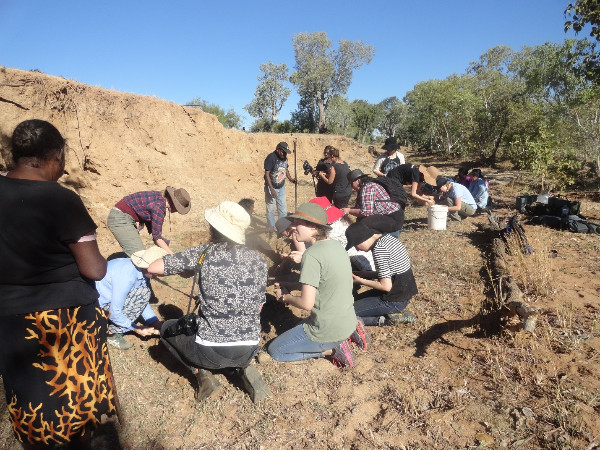
Master of Cultural Materials Conservation students learning from Gabriel Nodea and other members of the Warmun community. Photo by Sophie Lewincamp.
The need for cultural preservation is particularly acute in Indigenous and remote, rural and regional communities, and while Masters students gain high-level technical skills which equip them for museum and institution work, it’s their training in cultural competency and cross-cultural respect which will allow them to undertake vital work in remote communities in Australia and around the world.
For Sloggett, the social imperative is clear: ‘People keep what they love, so when you save people’s cultural material, you’re actually saving their cultural identity’.
Find out more about the Master of Cultural Materials Conservation
Internships and industry partnerships are critical here in providing hands-on experience.
‘Our partnerships mean that students complete internships in every Australian state, in Indonesia, the Philippines, Thailand, Malaysia, Singapore and New Zealand, dealing with real-world problems out in the field,’ says Sloggett – adding that students have also interned outside the region at the British Museum, the British Library, the Getty in Los Angeles, the Smithsonian in Washington, D.C. and elsewhere.
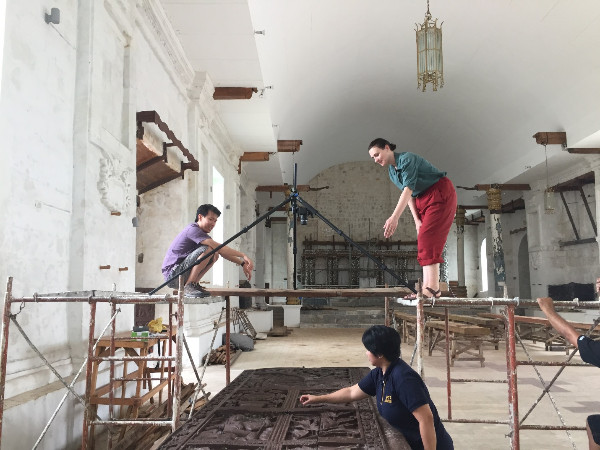
Reflectance Transmittance Imaging of a wooden carved door with National Museum of the Philippines’ Anna Carlos and University of Melbourne students Saiful Bakhri and Sophie Russell. Photo by Kim Vernon.
The fact that the course is structured to mirror the professional job market means students graduate as specialists in painting, paper, objects or textiles conservation, although increasingly jobs in new media, audiovisual, digital environment, and even performance preservation are opening up.
Sloggett is confident that graduates are equipped also for these emerging conservation fields. ‘We have a strong partnership with the Australian Centre for the Moving Image,’ she explains, ‘and since 2014 we have been developing new conservation models to support the region’s media culture’.
For more information visit the Master of Cultural Materials Conservation website.

